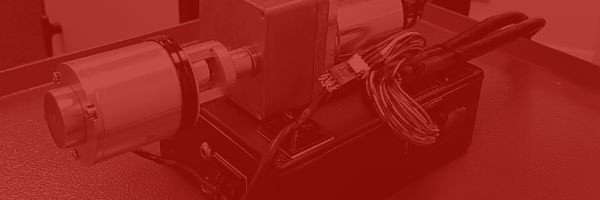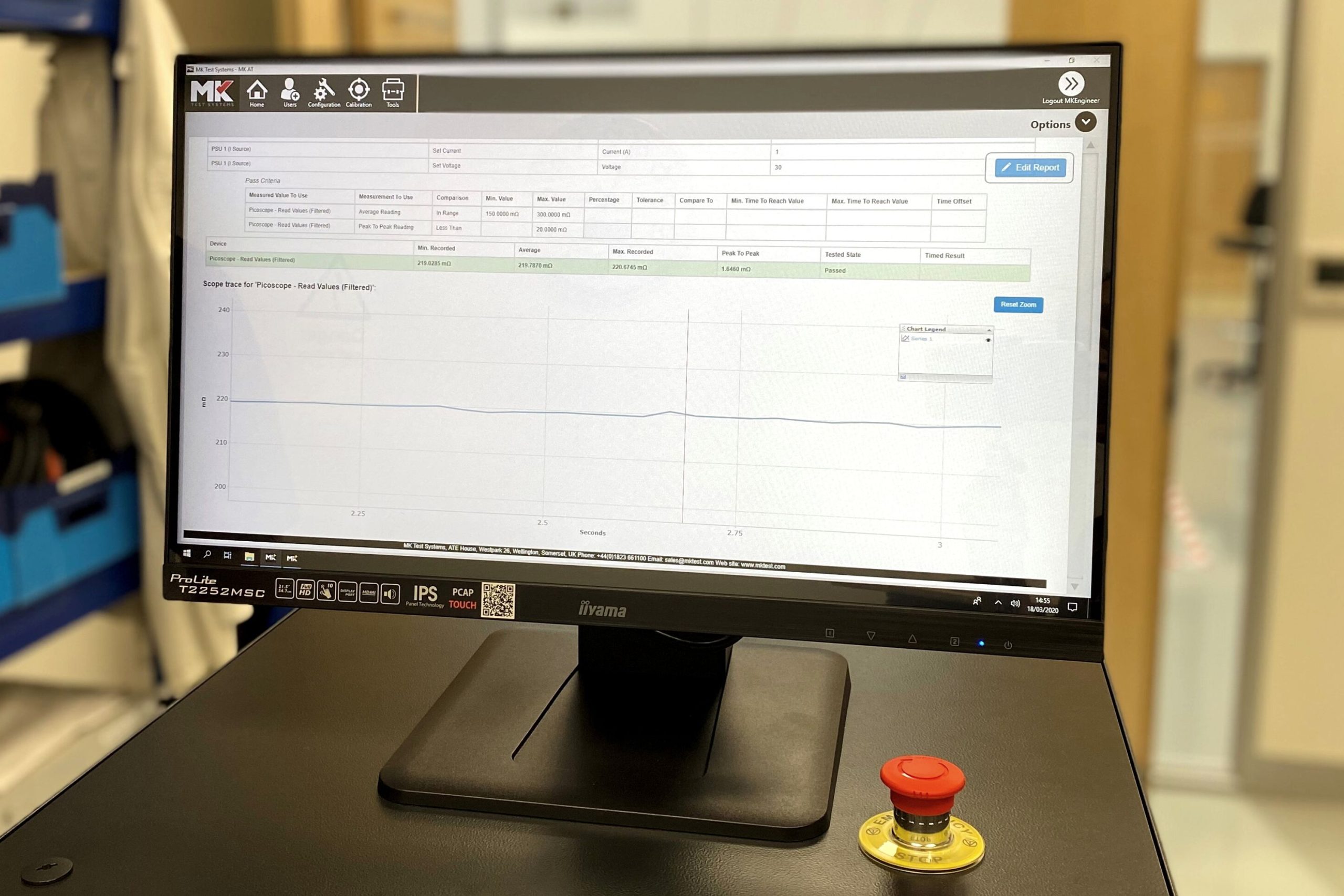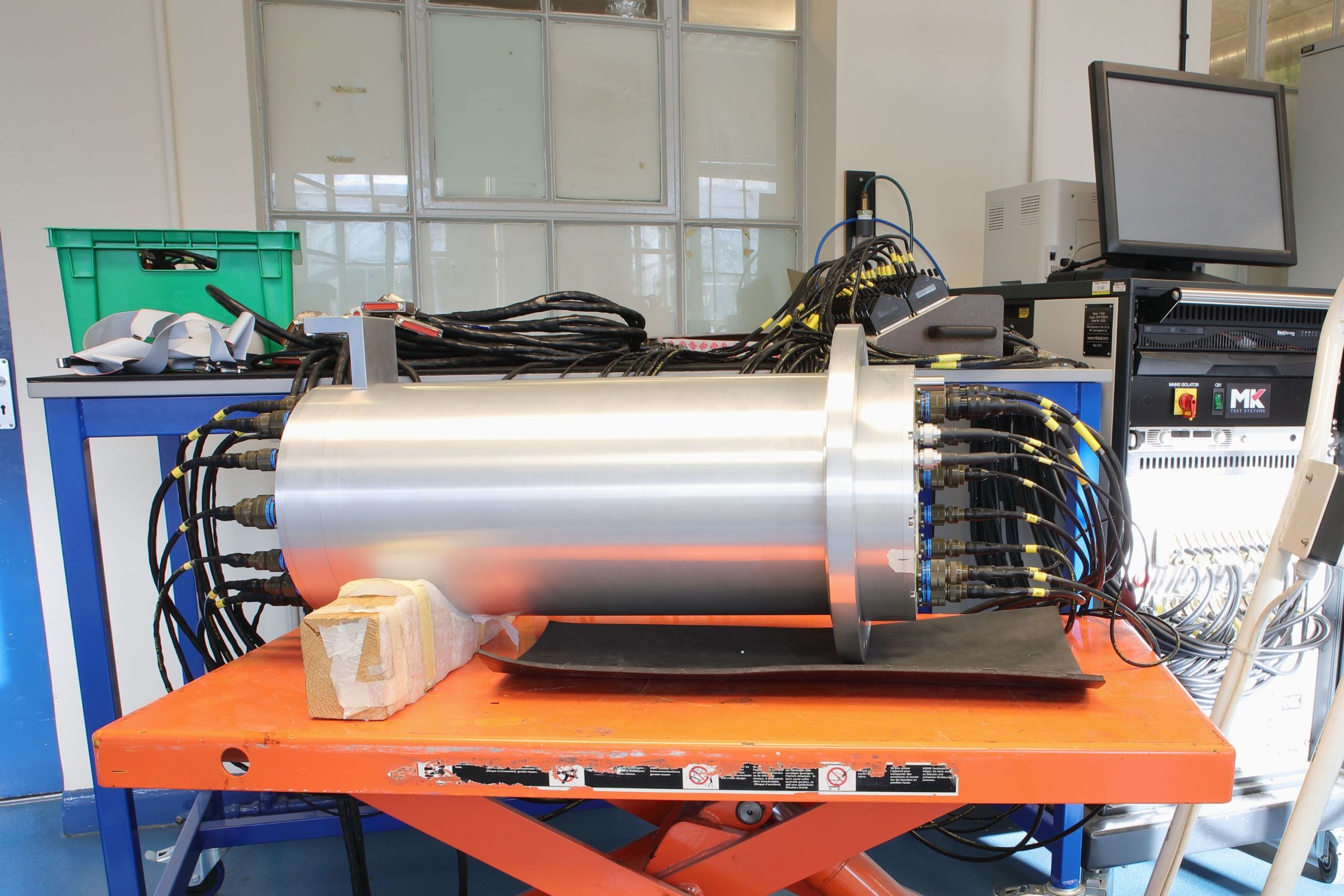Resistive noise in slip rings

If you manufacture or use instrument-quality slip rings, you must ensure that they reliably conduct power and signals that are not compromised by resistive noise. This post looks at the nature and causes of resistive noise in slip rings, and how to test for it.
What is resistive noise in slip rings?
Slip rings can be used to transfer power and data between the rotating and stationary parts of an electrical motor, generator or rotary transfer assembly. In an ideal world, they would provide a perfect transmission line with no effect on conducted data – but in reality, they will always introduce a degree of disturbance or deviation to the signal being transmitted. This is referred to as resistive noise.
If you are a user or manufacturer of slip rings, then you will be aware of the effect of resistive noise in your products, and the importance of being able to test for resistive noise. Unknown of excessive resistive noise can lead to unstable power transmission, degrade signal quality, and some types of noise can also indicate imminent failure of the slipring.
This post starts with the context – an explanation of why understanding and managing resistive noise is important. Then, we take a closer look at how slip rings operate, and how resistive noise can be generated. Finally, we discuss how modern slip ring testers can be used to assess slip ring quality rapidly and accurately.
Why resistive noise is important
Signal quality of sliding electrical contacts became a consideration in the Fifties when inertial measurement units (IMUs) were being developed and miniaturised to guide rockets and aircraft. These Inertial Measurement Units (IMUs) typically contained three gyroscopes and three accelerometers, measuring angular velocity and linear acceleration respectively.
Each of these three axes required a slip ring to transfer the signals from the sensors and to the motors driving the gyroscopes and electronics. These slip rings had to be very small and reliable, but above all they had to transfer the signals without adding significant electrical noise.
The problem was solved by electroplating gold rings on a rotating shaft, with the sliding contact provided by precious metal brushes on a stationary mounting. These precious metal, instrumentation quality slip rings also allowed engineers working in application areas other than IMUs to reliably transfer noise-sensitive signals to and from rotating platforms. The technique became necessary for many other applications, although gyroscopically-based IMUs have been replaced by alternative technologies.
Early slip rings were typically needed to handle very low-level analogue signals. While their rate of change was not challenging – with measurement bandwidth typically below 10 kHz – signal amplitude can be as low as a few millivolts. Accordingly, signal noise, if also at millivolt levels, would clearly seriously degrade signal quality.
Although requirements have changed in the migration from analogue to digital data transfer, signal noise remains of paramount importance when evaluating the performance of sliding electrical contacts.
The realities of noise in slip ring operation

If a powered product such as a turreted vehicle or robot has a continuously rotating part, electrical power and/or signals need to be transferred effectively between the rotating part and the static body of the product. The solution comprises two elements; the slip ring, or rotor, which is built onto the rotating part, and a fixed brush, or stator, which is maintained in close contact with the ring as it rotates. This allows electrical current to flow continuously from the ring and through the brush.
Although modern slip ring materials and design practices optimise the contact between brush and ring, there is always some contact resistance – and this continuously changes as the brush wipes across the rotating ring.
Ohm’s law tells us that any change in contact resistance will create a corresponding change in voltage across the brush and ring, according to the below formula:
Vn = I x ΔRv
where I = current through the sliding contacts, ΔRv = change in contact resistance and Vn = noise voltage.
The constantly-varying noise voltage is referred to as resistive or ohmic noise, traditionally called slip ring noise. A typical slip ring operating normally will exhibit resistive noise of between 4 and 40 milliohm depending on contact materials and operating conditions. This corresponds to 0.4 to 4.0 millivolts on a 100 milliamps signal.
Other sources of resistive noise
Note that two other noise sources also exist:
- Frequency-dependent noise, usually called crosstalk
- Deterministic noise or jitter caused by mismatches in the transmission line
These tend to manifest themselves as the signal bandwidth increases, for example in applications such as HD video and high speed serial communications. These digital signals operate in the gigahertz range, although their voltage levels exceed 1V – so they are less susceptible than analogue millivolt signals to resistive noise.
The sources of slip ring resistive noise so far discussed are an inevitable part of any design, although they can be minimised. However, another type of resistive noise can arise, particularly when passing high speed digital signals through slip rings. This appears as very short duration resistance spikes that can cause bit errors or power interruption; such spikes are frequently called micro cuts. They can be detected at measurement bandwidths of greater than one megahertz and can become problematic if they reach values of several hundred milliohms.
Micro cuts are particularly significant because they are not normal and represent a slip ring failure, especially if bit error rates (BER) become unacceptable. Typical causes include mechanical vibration, excessive wear, debris, plating quality issues or excessive contact filming.
Testing resistive noise in slip rings
Because resistive noise in slip rings can compromise signal quality, your customers depend on this being kept to minimal levels within your products.
Accordingly, slip ring test equipment – some of it automated – is available, allowing you to check product quality quickly and accurately, and prove it to your customers. Such equipment can report on noise, contact resistance, and insulation resistance. It can also be custom designed or configured for specialist applications.
Automation can accelerate the test process, firstly by allowing easy generation of test programs, and secondly through automatic report generation and customisation. Such systems can also be set up for use by less-skilled operators.
The effective test of a slipring which can detect noise and micro cuts requires a very high sample rate. At these sample rates, manual testing is difficult or ineffective. Automatic testing provides the ability to achieve these high sample rates and automatically log all measurements, allowing the user to characterise a slipring, guaranteeing quality and traceability.
In some cases, communication with third party environmental test systems such as climate chambers or vibration beds can be useful.
Summary

With slip rings being used in aerospace, defence, and medical instrumentation, as well as the rapidly growing wind turbine industry, the need for proven quality power and signal transmission is essential.
As a slipring manufacturer or user, you need fast and accurate testing capabilities to assure this quality cost-effectively.
When choosing a test equipment supplier, it is important to ensure that they can not only offer equipment of suitable capability, but also that they can adapt it exactly to your requirements, and then support it with local training, repair, and calibration services.
Reference and citation
This post has used material from ‘Electrical Noise and Sliding Electrical Contacts’ – a Technical Report by Glenn Dorsey, Vice President Product and Business Development, Moog Inc. Dorsey, Glenn. (2016). Electrical Noise and Sliding Electrical Contacts. 10.13140/RG.2.2.12451.50729.
Next steps
To learn more about the solutions we offer to test for resistive noise, please visit our Slip Ring Tester page.
